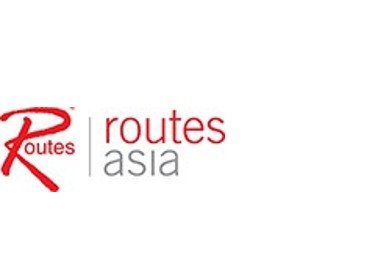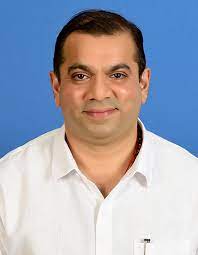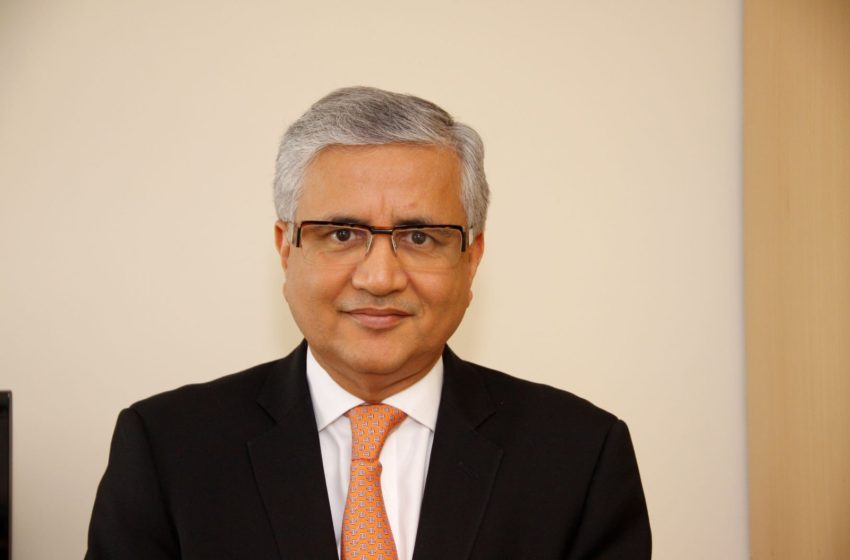Farhat Jamal, Chairman, IMC Travel Tourism and Hospitality Committee
Today, India aims to become the world’s top medical tourism destination, tripling its revenue to USD 13 billion in four years.
NITI Aayog estimates that the Indian economy could earn an additional USD 9 billion by 2026 from MVT and wellness tourism. Currently, India, ranked tenth with a score of 69.80 on the Medical Tourism Index, offers over 200 types of medical services ranging from fertility treatments to skincare. The most sought-after treatments are cardiovascular surgeries, cancer treatment and organ transplant surgeries, as these are 65-90% cheaper rates when compared to US, Europe, Australia or even Singapore. India has 40 healthcare facilities accredited to the Joint Commission International (JCI) and 1400 National Accreditation Board for Hospitals and Healthcare Providers (NABH)-accredited hospitals.
At the 68th Regional Commission for Europe on June 5th UNWTO Secretary-General Zurab Pololikashvili said: “Health tourism helps destinations diversify, creating jobs, supporting businesses and extending these benefits to rural communities. However, this part of our broad sector is especially reliant on skilled workers. As tourists’ expectations rise, so too must the level of service that destinations can provide.”
Also, at the UNWTO “Medical and Wellness Tourism” conference, held in the Dead Sea area on June 8th Health Minister of Jordan Firas Al Hawari pointed out that investing in healthcare and medical tourism is key to increasing economic growth, according to their Economic Modernisation Vision (2023-2025).
Jordon Tourism Board’s Director General Abdulrazak Arabiyat noted the board’s commitment to promoting Jordan as a top medical tourism destination, with 45 marketing packages and new tourism products designed specifically for this purpose.
India has also been rankled 10th in the Medical Tourism Index (MTI) for 2020-21 out of 46 destinations in the world by the Medical Tourism Association. It also accounts for 6% of the global MVT (Medical Value Travel) market. An estimated 1.4 million medical tourists visited India in the past one year. According to the Ministry of Tourism website, India has 1000 recognised nurses-training centres with 10,000 nurses graduating annually. India also has Ayurveda, yoga & naturopathy and other traditional systems of medicine for the treatment of various ailments, promoting wellness tourism. The country witnesses an influx of patients from Bangladesh, Iraq, Maldives, Afghanistan, Oman, Yemen, Sudan, Kenya, Nigeria and Tanzania. These countries account for about 88 per cent of the total international patients visiting India and the stats are witnessing continuous growth even for patients from developed countries. The sector is projected to clock exponential growth by 2026. Undoubtedly, our strength lies in the infrastructure and diagnostic facilities, which are some of the best in the world while being cost-effective which puts us at the centre of the global healthcare industry.
Millennials make the way for health & wellness
Millennials are already driving the hotel and health industries in varied ways. For them, discovery of the outer world is intertwined with the discovery of the self. While revenge travel is driving occupancies at hotels, the average-spend by millennials on health — be it gears, gadgets or nutritional supplements – has increased significantly. The Deloitte Global 2021 Millennial and Gen Z Survey, which tapped the pulse of more than 14,600 Millennials in 45 countries, asked respondents to identify their top three personal concerns. Twenty-eight percent of Millennials cited health care and disease prevention as a top concern in 2021, as compared with 21% in 2020. The pandemic altered the way we perceive our health, especially for millennials for whom health is no more restricted to the boundaries of a ‘holiday’ or a break from daily monotony. Even companies are including it in their employee-care programs. As employee well-being grows in importance, employer sponsored medical travel is making more sense than ever. Budgets are being earmarked and health policies are being redefined.
The rising demand for wellness resorts among travellers and an increasing interest in luxury senior living projects offering state-of-the-art medical facilities serves as a positive affirmation for opportunities in medical tourism sector. People are constantly looking for places that offer the best of both the worlds – health and hospitality. Experiential and immersive travel experiences such as Yoga, workouts, meditation coupled with carefully curated food menu and local community practices, also giving fillip to the local economy are going to be a newer area of wellness resort development in the coming years.
Holistic wellness – the India way
Since time immemorial, India has been the epicentre of wellness tourism boasting of Ayurveda, Yoga, Naturopathy, Sidha and Unani systems of health & wellness. When it comes to holistic health, India offers a 360-degree that combines science as well as ancient knowledge. Thanks to a robust medical and healthcare system supported by strong infra, talented doctors and skilled healthcare staff, it has the potential to attract patients from developed countries as well. Today, medical travelers are trusting India for niche treatment areas include cardiology, oncology, fertility, orthopaedics, neurology, and aesthetics such as bariatric treatments – as well as dental services. Competing with the front runners in Medical Tourism such as Japan, South Korea, Thailand, Indonesia and Malaysia, India is leaving no stone unturned to become the world’s top medical tourism hotspot.
This year, in the month of April, India hosted the ‘One Earth One Health – Advantage Healthcare India 2023 – programme in New Delhi in a bid to promote India as a hub for medical tourism. With 500 foreign participants from over 70 countries, the two-day summit aimed to promote the export of medical services from India and provide networking opportunities for Medical Value Travel (MVT) experts, industry stakeholders and professionals. At the inaugural event, Prime Minister Narendra Modi touted India’s traditional healthcare systems as holding a lot of answers to stress and lifestyle diseases. While policies will provide the framework and direction, creating infra and supporting facilities for a seamless experience from the airport to the hospital and back is vital. This means all the stakeholders such airlines, hospitals, wellness centres, tour operators, transport providers, insurance companies and hotels need to put in a collaborative effort.
Exploring the new realms of PPP
To market the nation as a wellness and medical tourism destination, the government has launched a ‘Heal in India’ campaign. Targeting the global demand for holistic healing for lifestyle diseases such as diabetes, the government is pitching Ayurveda, yoga and naturopathy — falling under the ambit of the Ayurveda, Yoga & Naturopathy, Unani, Siddha and Homeopathy (AYUSH) Ministry — as an alternative to modern medicine. India has launched e-visas for MVT travellers from 156 nations and has also accredited AYUSH centres, formalising their status in the Indian medical industry. In future, the government plans to launch a one-stop online MVT portal, which will include mapping of all medical facilitators including government and private hospitals, booking of services, payments and post-operative services. An ideal example of Public-Private Partnership (PPP), the private sector with its capital and experience must support the progressive policy framework to achieve India’s medical prowess. We still need to work towards building our credibility through best global medical accreditations, provide transparent and effective communication, reduce huge price anomalies for similar treatments across hospitals and most importantly implementation of a robust medical tourism policy at the centre and state level.
According to India Hospitality Industry Overview 2022 report by HVS Anarock, developing dedicated hospital-hotel mixed-use projects and patient hotels designed to meet the needs of medical travelers, as is common in Scandinavian countries and even in Asia countries like Japan, South Korea, Singapore, Thailand, etc., could be a profitable business model in the future. It will also help the country realize its true wellness & medical tourism potential. Indeed, the two sectors – health and hospitality – should now build on this success to provide medical travelers with a seamless tourism experience. Medical Tourism has the potential to improve the quality of life of many – by providing the best medical treatment/preventive care or job opportunities to the youth of the country or simply teaching the science of healthy living – the next big story of healthcare & hospitality has just begun. A blend of cost-effective medical treatments with our incredible centuries’ old heritage & topography of the country and the quintessential ‘India experience’ I have little doubt about travelers making a beeline to avail the best of both the worlds – health & hospitality!






